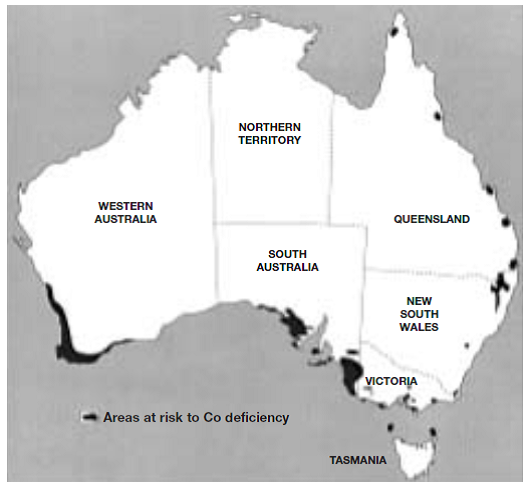Cobalt deficiency
Conditions when likely to occur:
Known deficient regions such as coastal calcareous sands, high rainfall granite soils and krasnozem soils, exacerbated by liming and high superphosphate application, especially in lush seasons. Young growing stock.
Blood biochemistry: Plasma vitamin B12 deficient <0.1mmol/l, liver vitamin B12 deficient <75 nmol/kg wet weight, liver cobalt deficient <1.0µmol/kg dry matter and pasture cobalt deficient <0.1 mg/kg DM.
This map highlights the main regions where trace element deficiencies occur (but does not necessarily cover all trace element deficient regions):

Figure 2: Areas where livestock may be at risk from cobalt deficiency
Source: Peverill, KI and Judson, GJ ‘Cobalt’ in KI Peverill, LA Sparrow and DJ Reuter (eds), Soil Analysis: An Interpretation Manual, Melbourne: CSIRO Publishing, 1999;319–323.
More specific state details can be found on state departments of primary industries and agriculture websites.
Clinical signs: Similar to malnutrition, emaciation, ill-thrift. Cobalt deficiency has been associated with a high degree of ketosis and poor body condition.
Management strategy to prevent disease:
Vitamin B12 injection (8–12 weeks prevention) or cobalt pellets for longer term prevention.
Top-dress pasture (variable response).
Discuss dosage and options with your veterinarian and agronomist.
